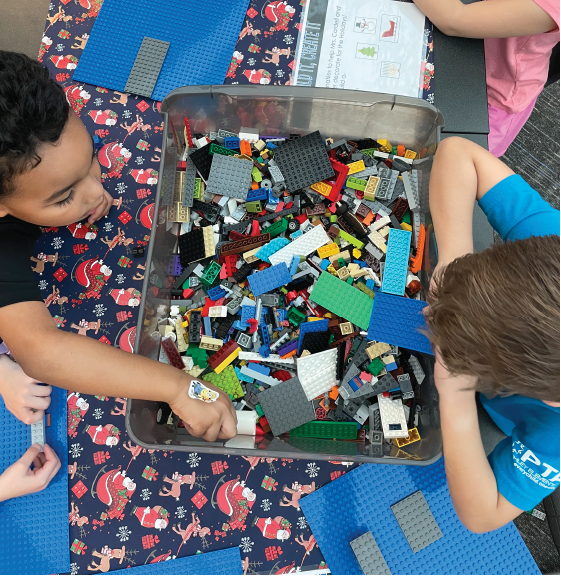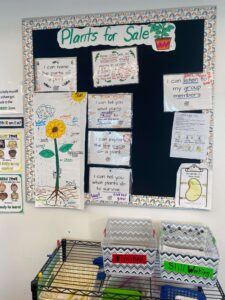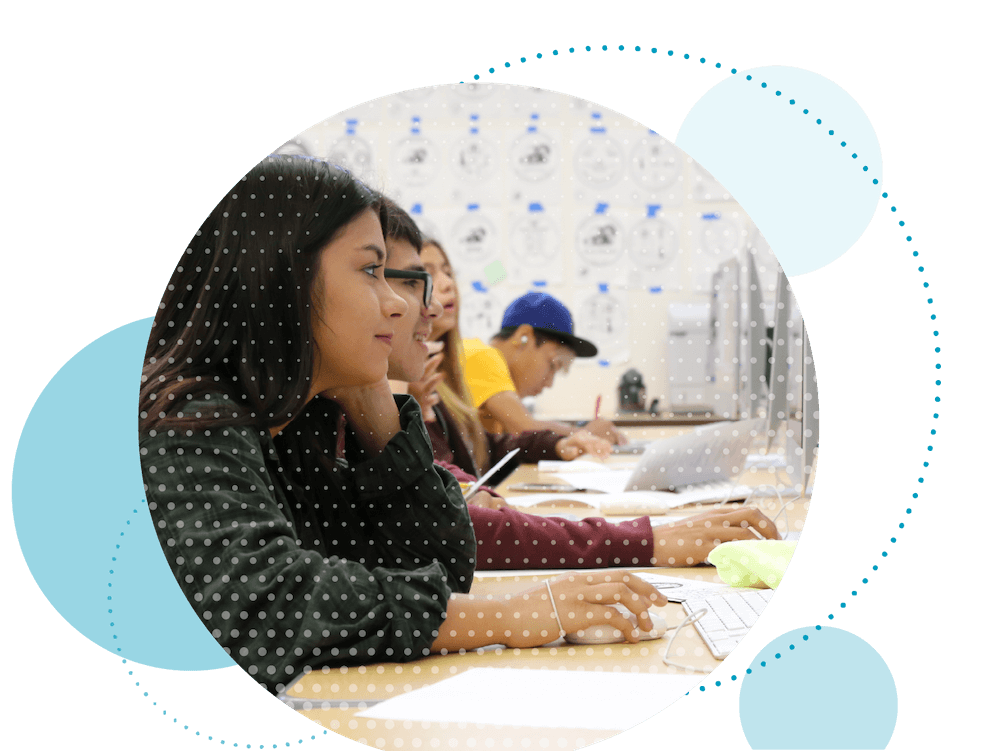Our Network
Resources and Tools
Project Based Learning in Kindergarten: Inspiring Young Minds Through Hands-On Projects and Activities
What is Project-Based Learning (PBL) for Kindergarten?
Project-based learning (PBL) is an inquiry-based and learner-centered instructional approach that immerses young learners in authentic learning and real-world projects that foster critical thinking skills. Project-based learning in kindergarten can be implemented in a classroom focused on one subject area, across content areas, grade levels, or even school-wide. PBL offers students the ability to actively participate in their own learning. Instead of rote memorization of information and direct instruction, students engage in meaningful learning opportunities, problem solving, exercise voice and choice, and develop skills and knowledge of a lifelong learner. While beneficial in k-12 learning environments, implementing project-based learning in kindergarten is particularly effective because it leverages the natural desire for young minds to learn through inquiry, play, and hands-on exploration. For more details on PBL, read The Comprehensive Guide to Project-Based Learning.

Why PBL is Essential for Kindergarten?
In contrast to teacher-led instruction, project-based learning encourages young learners to think creatively and develop the New Tech Network Learning Outcomes of Collaboration, Communication, and Knowledge and Thinking.
Benefits of Project Based Learning in Kindergarten
Development of Foundational Skills
NTN believes that literacy instruction at the elementary level should utilize a range of assessments to inform instruction and that instruction should address the wide range of skills necessary to ensure students’ literacy development. In addition, NTN believes that instruction should be connected to meaningful purposes and contexts. Thoughtfully embedding literacy instruction into PBL at the elementary level allows for a broad range of literacy measures and contextualized, meaningful literacy instruction focused on the full set of skills necessary for student success.
Most literacy skills can be taught effectively in the context of a project. Foundational literacy skills (phonemic awareness, alphabet, phonics, and spelling) are an exception; since it may not always be realistic to teach foundational skills within the project, they can be taught alongside the project, meaning that skills are introduced separately and then concepts are connected back to project topics whenever possible. For example, students might learn a letter, sound, or grapheme alongside the project, but then use vocabulary from the project to review the concept. Another way foundational skill instruction might be connected to project topics is through writing. Writing is one effective way to support phonics learning (Cunningham, 2015), and connecting the writing to project topics makes literacy instruction purposeful and meaningful for students. Even emergent and early readers can participate in shared writing activities on project topics or use invented spelling to write about project topics using a particular letter or grapheme. Other literacy skills can be fully embedded into the project context like oral language development. Effective oral language development requires a supportive learning environment, interaction, and a sustained focus on one topic (Lonigan and Shanahan, 2016).
Social and Emotional Growth
NTN’s Supportive Culture Focus Area supports school communities in fostering a school-wide culture of belonging, care, community, and growth for adults and students. This type of culture is foundational in early childhood so that students can become more independent and also embrace cooperative learning. This type of supportive culture helps students gain literacy skills, essential social skills, and develop problem-solving skills. It takes work and the use of strategic practices to cultivate a community in your classroom. Below are a few NTN Culture Practices used to create this environment:
- Community Circles: A ritual and routine that involves learners collectively connecting, reflecting, and developing social and emotional learning skills. In elementary classrooms this circle usually takes place during morning meetings. Culture building practices like this help children develop skills to collaborate and practice oral communication.
- Co-Create Community Agreements: Agreements that generate active cooperation, and collective sense-making, ensuring each and every student has an opportunity to co-create shared processes for engaging in learning.
You can find more practices like these by downloading the NTN Practices Cards Sample Deck here.
PBL Projects for Kindergarten
Real-World Project Ideas for Kindergarten
Community Contributors Project
- Driving Question: How can we contribute to our school community?
- Project Scenario: Children learn about contributors to their community and learn how to contribute to their school community. Suggested community contributors include: librarians, with students holding a story day; waste management officials, with students promoting recycling or preventing littering; and public health officials, with students holding a blood drive.
- Activities: research on community roles and jobs in non-fiction books, concept map on community helpers, field trip to community contributor’s workplace, an individual draft of a story about community contributors.
- Final Product: school service day presentation – in this case, a story day, where students will present portraits of community contributors and share stories they’ve written (see below to download the full project snapshot).
Nature Numbers: Counting and Caring Parade
- Driving Question: How can we appreciate the nature that is all around us?
- Project Scenario: Students engage in a hands-on exploration of mathematics by counting through the lens of environmental awareness. By collecting and counting natural objects, students will develop the ability to count objects up to 25 using natural items, practice writing numerals from 0 to 25, and answer “how many?” questions.
- Activities: drafts of nature book page, nature walk, nature sorting activity, counting exploration stations, nature story time, mindful walk in nature, parade practice.
- Final Product: Kindergarten students will create a nature counting book, where each page features a different set of collected natural objects, such as leaves, rocks, or twigs, with corresponding numbers written and illustrated by the students.
Seasonal PBL Projects
Fall Project: Back to School Night
- Driving Question: What are the most important things to know about our school?
- Project Scenario: Kindergarteners prepare to introduce the “who” and the “what” of their school to parents at a back to school night. They learn about “who” makes up the school community, including each other and school staff members. They also learn about the “what” of their school, creating maps with the important parts of the classroom and school.
- Activities: a tour of the school, adding labels to the school map, read-aloud: feeling connected at school, practice interview questions for members of the school community.
- Final Project: presentation of school/classroom map with pictures and labels to parents at “Back to School Night”, introductions of school staff members to parents, and presentation of class-created agreements.
Spring Project: Growing Food
Project Driving Questions:
- What kinds of vegetables grow in our area?
- How can we bring healthy vegetables to more people in our community?
- Project Scenario: Students will learn about the importance of fresh, local vegetables for the health of a community. They will learn about the kinds of vegetables and crops that can be grown in their local area, considering weather patterns/seasons and local environmental conditions. They’ll help ensure there are vegetables available in their community for more people by caring for fast-growing produce in the school garden/greenhouse/containers and donating the produce.
- Activities: Create a growth chart, compare plant growth in different conditions, track weather, discuss findings, and build teamwork skills.
- Final Project: Vegetables to donate, an infographic on what vegetables need to grow.
Setting Up Your Kindergarten Classroom for PBL
Create Defined Learning Zones and Project Visuals
For all grade levels of project-based learning, the physical classroom takes careful planning for the best use of the learning space. Consider best practices that you already use and determine how they fit into the project.
 One example of this might be Centers or Work Stations. If you use stations already, how might they be adapted to include literacy and math alongside skill practice and PBL work? Set up spaces for collaborative work and inquiry stations so that students learn by actively engaging in hands-on experiments and observations. Visual displays of the current project happening in the classroom helps students remember the focus of the project over the extended period of time. Creating a “Project Wall” to display the project’s Driving Question, “Knows” and “Need to Knows” and other crucial project documents, support students throughout the project and is a great place to revisit each week.
One example of this might be Centers or Work Stations. If you use stations already, how might they be adapted to include literacy and math alongside skill practice and PBL work? Set up spaces for collaborative work and inquiry stations so that students learn by actively engaging in hands-on experiments and observations. Visual displays of the current project happening in the classroom helps students remember the focus of the project over the extended period of time. Creating a “Project Wall” to display the project’s Driving Question, “Knows” and “Need to Knows” and other crucial project documents, support students throughout the project and is a great place to revisit each week.
 Another helpful tip is to create a physical version of the project path to display in your classroom or visual benchmarks. These visual benchmarks might occupy a front whiteboard, bulletin board or even the hallway. In addition to the project path representation, team markers can represent each project group’s progress. Regularly refer the class to the visual benchmarks by having groups update their progress as well as reflect and share on the strategies and actions that have helped them move through the project stages successfully.
Another helpful tip is to create a physical version of the project path to display in your classroom or visual benchmarks. These visual benchmarks might occupy a front whiteboard, bulletin board or even the hallway. In addition to the project path representation, team markers can represent each project group’s progress. Regularly refer the class to the visual benchmarks by having groups update their progress as well as reflect and share on the strategies and actions that have helped them move through the project stages successfully.
Tips for Implementing PBL in Kindergarten
Balance Structure and Flexibility
The first step in creating a PBL lesson plan is to map out the standards that need to be addressed in the project. Educators should identify key power standards, knowledge, and skills required to solve the real-world problem students will tackle in the project. Second, develop the Driving Question that will invoke the big ideas or themes addressed by the project. Next, establish clear milestones or benchmarks that check for understanding and learners’ skill development. Benchmarks also allow educators to give feedback on student work and progress. Benchmarks are designed to build on each other to support teams toward the culminating product at the end of the project. Consider the scaffolding or learning activities needed to meet each benchmark. Scaffolding should be differentiated to meet students’ needs, support them in skills they have yet to develop, and allow for a rich learning experience within the project. Lastly, remember the foundational literacy and math skills that can be taught “alongside” the project. These skills are introduced separately and then concepts are connected back to project topics whenever possible. To learn more about benchmarks and scaffolding read Scaffolding in Teaching: Supporting Student Success Through Project-Based Learning.
Encourage Parental Involvement
Invite parents to participate as guest speakers or helpers during project activities. At the beginning of each year, many teachers create a log of parents and their professions to help create authentic connections to projects. Keep parents aware of the projects their learners are working on each week and include where the class is in the project process, what project is coming up next, what volunteers you will need and questions that parents can ask their students about their project at home.
Download Resources for PBL in Kindergarten
Click to download the project snapshot of the “Community Contributors Project” described in the article. The snapshot includes the information stated above and the standards used, the benchmarks in the project, the NTN Learning Outcomes skills assessed, and the literacy and math topics taught “alongside” the project. For help in designing a project, click the PBL Lesson Plan Template article for support in designing a project and a free template to download.
References:
Cunningham, P.M. (2015). Best practices in teaching phonological awareness and phonics. In L.B. Gambrell and L.M Morrow (Eds.), Best practices in literacy instruction, 5th edition. New York: The Guilford Press. Lonigan, and Shanahan, T. (2016). The role of early oral language in literacy development. Language Magazine.


